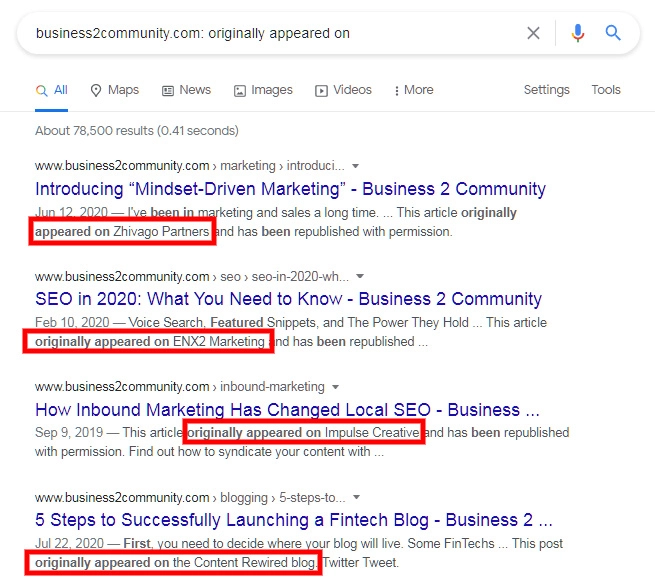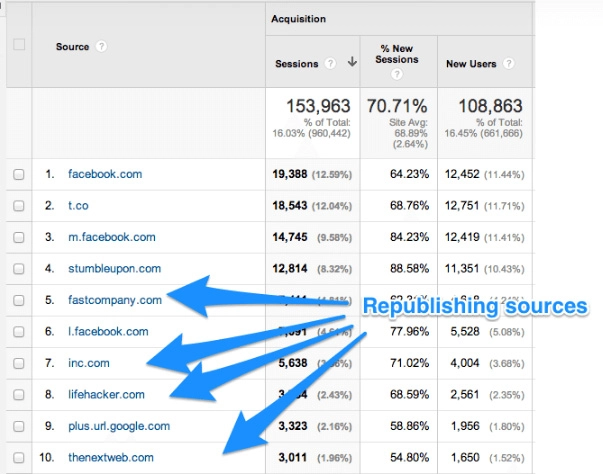
Introduction
Do you want your content to reach thousands of people?
Of course, you do.
Well, there’s a way to do it and reach a wider audience. It’s called content syndication, which refers to the process of republishing your content on third-party sites.
Syndicating content on authoritative sites can help you reach thousands of readers and attract those who are interested in your content and niche. Imagine gaining more traction from a republished article! Isn’t it great?
But do good publishers syndicate content?
Yes, they do. Even top publications such as HuffPost and CNN republish syndicated content that is valuable for their readers.
If you’re not syndicating content yet, it is high time that you create a content syndication program for your brand.

How Can Syndicating Content Help Grow Your Brand?
When done right, content syndication offers a number of benefits to brands, which include:
- Increased brand awareness
- Greater exposure to your content and brand
- Increased readership
- Referral traffic to your site from your syndicating partners
- Increased backlinks and improved SEO value
- A higher number of subscribers (if your content is really great)
- Thought leadership building
- More qualified leads generation
- Increased sales and revenue
- Enhanced authority, trust, and brand reputation
- Faster content creation by repurposing old content
How Exactly Does Content Syndication Help You Reach More People?
When you publish a post on your website or blog, it just reaches your website visitors and blog subscribers. Your social media followers will also get to learn about it when you share your article on social media.
If you optimize your post for relevant keywords, you can get it ranked on the first page of Google for relevant searches. Many people can find it in the SERPs and visit your post.
If these people like your post and find it valuable, they may share it within their social circles and your content will reach a few more people probably.
However, content syndication multiplies this process by the number of times your content is republished. For example, if n number of sites republish your content, your audience + their audience will reach your content.
Just imagine multiplying your content’s reach by n number of times!
That’s the kind of traction your brand needs to succeed.
And the best part? An effective content syndication program can help you gain that kind of traction for your brand.
You can either syndicate content yourself or leverage third-party content syndication services to reach a wider audience and increase your chances of driving conversions. Content syndication can not only help reduce your lead generation efforts but also increase your ROI.
How to Create an Effective Content Syndication Program for Your Brand?
Here’s how you can syndicate your content to get found by a wider audience:
Understand Who Your Audience Is
You should identify who your target audience is, what they are looking for, which topics interest them, and more. Then, use this information to create content that your ideal buyers are likely to be interested in.
For example, if you’re a SaaS company offering a marketing tool, you should focus on creating content that your buyers may look for.
You can create:
- A guide that explains how your tool works
- A comparison post of your tool and 1-2 other competitors of your tool
- Videos that explain how to use your tool
- A case study of how your tool helped a brand generate great results
- An infographic that includes the latest statistics and market trends relevant to your niche (If you’re selling an email marketing tool, you can create an infographic about the latest email marketing statistics.)
Leverage Self-Service Syndication Platforms
The easiest way to start content syndication is to use self-service syndication platforms such as Medium. Medium.com allows you to republish your content, photos, audio, and videos directly.
Syndicating your content on Medium can bring you the exposure and traffic you won’t be able to generate on your own. The platform has millions of monthly active readers and it also allows users to comment on the content published there.
This means not just greater exposure but higher engagement for your content.
Just like Medium, you can also republish your blog posts on LinkedIn. This strategy is really effective if you run a B2B company and are trying to reach decision makers to sell your SaaS products.
That’s because most decision makers are active on LinkedIn and do spend time reading blog posts related to their area of expertise. Syndicating your content on LinkedIn can help you reach them and also generate qualified leads for your business.
You can also repurpose and share your content on Slideshare. This platform allows you to upload slides of content that are informative and educational. Many brands republish their industry reports and case studies on Slideshare to maximize their exposure.
Check Out The Ultimate Content Syndication Guide: Your roadmap to lead generation success.

Find Syndicating Partners
You should look for high-authority sites in your niche that allow content syndication.
But how can you find them?
First things first, you should look for high-authority sites in your niche and probably start guest posting with them. Make sure that the sites you choose have a high domain authority (DA), are relevant to your niche, and maintain good content quality standards.
Once you’ve got a list of sites you want to syndicate your content on, you should check whether or not the site allows republishing content.
The easiest way to check this is to search for terms like, “originally appeared on,” within your target site.
For example:
Here’s how I checked whether or not Business 2 Community will allow me to syndicate content:

Image via Google
Google showed a number of syndicated posts published on this target site, which means that Business 2 Community is part of the content syndication network.
Once you identify sites that allow syndication, you need to pitch their editors to get your content republished on their sites.
While some sites republish the whole post, some of them may syndicate a part of it. The editors may also request to make changes to your article while republishing it on their site.
Make Content Syndication a Regular Habit
Content syndication shouldn’t be a one-time affair. It is something that should have a constant place in your content marketing plan.
For example:
Buffer is a big name in the world of social media marketing and management. The brand has built amazing republishing connections with many top publications such as the HuffPost, Lifehacker, Inc, Fast Company, and The Next Web.
Their content syndication journey started with Leo (the co-founder of Buffer) writing 150 guest posts over a period of nine months. From guest posting to republishing content, Buffer eventually received huge traffic gains over time.
Here’s a screenshot that shows traffic spikes driven from their republishing sources:

Image via Buffer
Many of their syndicated posts received numerous shares on social media, which helped them reach a wider audience than what they could have reached on their own.
Are You Ready to Reach a Wider Audience Using Content Syndication?
It’s your turn to create informative and engaging content such as infographics, videos, study reports, and guides. Engaging content is easier to syndicate and has higher chances of driving readers to your site.
Along with focusing on content creation, you should also be careful while choosing your syndicating partners. Along with third-party authoritative sites in your niche, you can also syndicate your content on platforms like Medium and LinkedIn.
This will help your content reach a wider audience, generate leads, and increase your chances of driving conversions. Let’s turn your content into a lead-generating powerhouse.
Our blog
Latest blog posts
Tool and strategies modern teams need to help their companies grow.

Our definition of marketing success in B2B is evolving. For years, traditional metric...

Video has emerged as one of the most effective tools to cut through the noise and con...

The way B2B buyers research, engage, and decide has changed and so must the way marke...







